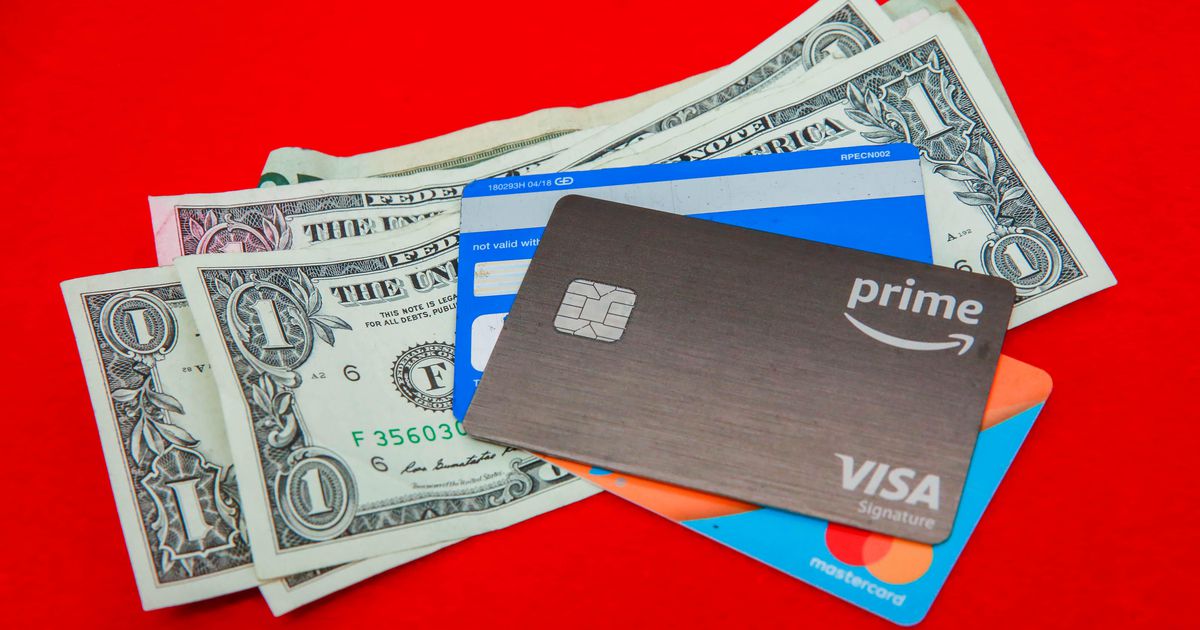A rewards credit card is a great way to get value from your card every time you shop. With the right rewards credit card, whenever you use your card to make a purchase, you get rewarded — whether it’s in the form of cash back, points, gift cards, a welcome bonus, or miles that can be redeemed for travel.
Used responsibly — meaning you pay off your balance in full each month — a rewards credit card can be extremely lucrative. Of course, before you apply for any credit card, you’ll want to make sure you understand the system so that you can maximize your rewards potential.
If you’re looking for the best rewards credit card to help you get more cash back, earn points, or save money while traveling, you’ve come to the right place. Here are our top picks for the best rewards credit card in every category. We’ll update this list periodically.
Best overall cash-back rewards card
Annual fee: $0
Rewards rates: Reward rates: Unlimited 1.5% cash back on all purchases and 5% back on travel through Chase, 5% cash back on grocery store purchases (not including Target ® or Walmart ® purchases) on up to $12,000 spent in the first year, 3% back on dining, 3% back on drugstore purchases
Welcome bonus: $200
Bonus redemption threshold: Spend $500 on purchases in the first three months
Credit requirement: Good to Excellent
Intro APR: 0% on purchases (15 months)
APR for purchases: 14.99% to 23.74% variable
APR for balance transfers: 14.99% to 23.74% variable
Balance transfer fee: 5% (minimum of $5)
If you’re in the market for a credit card with great overall cash-back rewards plus extra incentives for travel and dining, we think the Chase Freedom Unlimited card is a top choice. With 5% cash back on travel purchase through Chase, 5% on grocery store purchases (not including Target or Walmart purchases) on up to $12,000 spent in the first year, 3% on dining, 3% on drugstore purchases and a 1.5% flat rate cash back on all other purchases, the Chase Freedom Unlimited card offers all-around great rewards, with one of the highest flat rewards rates out there.
New card members will receive $200 in bonus cash if you spend $500 or more during your first three months of card membership — one of the lowest bonus thresholds among the cards profiled here. Note that the 5% cash back on travel is only for trips booked through the company’s Chase Ultimate Rewards service. Though it offers a lower standard rate (1.5%) than the Citi Double Cash Card (up to 2% cash back; 1% when you buy plus 1% when you pay for those purchases), we think that flat 1.5% rate plus the higher category spending rates make it the better card overall for most people.
This rewards credit card works well whether it’s the only card in your wallet or used to supplement a specific category card, like a travel credit card, which may offer higher bonuses for a particular type of purchase. It can also be useful when paired with a card that earns Chase Ultimate Reward points, because you can convert your rewards into points, which can increase their value. Keep in mind that cards that offer higher rates on certain categories — like the Capital One Savor’s 4% cash back for dining and entertainment — may offer lower rates on other categories. As such, it pays to have that flat 1.5% cash back from the Freedom Unlimited card for everyday purchases that don’t fall into other cards’ bonus categories.
You can redeem any amount of Chase points either as a statement credit on your bill, or as a direct deposit into your bank account. The redemption flexibility is a nice advantage over other cards that only allow redemptions at certain levels, like 2,500 reward points or $25.
Best travel rewards card
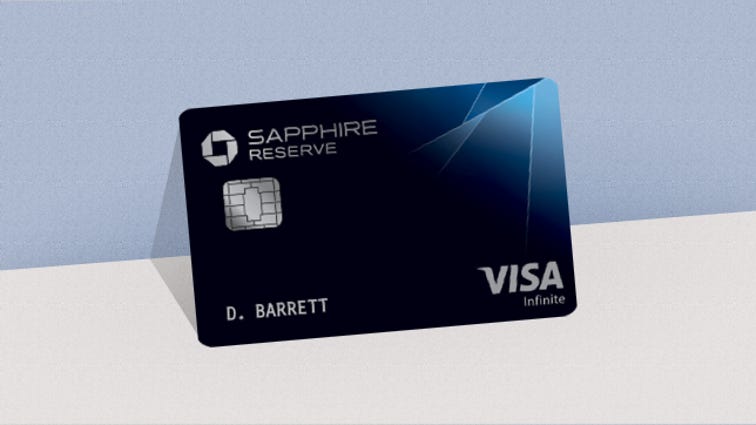
Chase
Annual fee: $550
Reward rates: 3x points on dining and travel (3x on travel begins after earning $300 annual travel credit), 1x points on all other purchases
Welcome bonus: 60,000 bonus points
Bonus redemption threshold: Spend $4,000 in first three months
Credit requirement: Excellent
Intro APR: N/A
APR for purchases: 16.99% to 23.99% variable
APR for balance transfers: 16.99% to 23.99% variable
Balance transfer fee: 5% (minimum of $5)
If you’re planning multiple trips this year or travel more than most, a top-notch travel rewards credit card can offer you excellent savings, when used responsibly. The Chase Sapphire Reserve is a general travel rewards credit card, meaning you earn points on any travel or dining purchase, not just with a single airline, and your redemption options are much more flexible and transferable. The Chase Sapphire Reserve rewards card is even better for those who value the additional travel perks like travel insurance, hotel discounts and freebies, and lounge access. This travel card offers great value for anyone spending around $12,000 or more annually on travel (flights, hotels, rental cars, trains, buses, taxis) and dining (restaurants, cafes, bars) combined.
Cardholders earn unlimited 3x points on travel and dining purchases, 1x points on all other eligible purchases, and 10x points on Lyft rides through March 2022. While the $550 annual fee is on the high side, an annual $300 statement credit for travel purchases essentially brings the yearly commitment down to $250. The signup bonus is 60,000 Chase Ultimate Rewards points after spending $4,000 in the first three months (worth $900 when redeemed for travel in the Chase portal). Chase Sapphire Reserve card holders also get a statement credit reimbursement for Global Entry or TSA PreCheck (worth $100 for Global Entry or $85 for TSA pre-check, both of which are valid for five years) plus a number of VIP-style travel perks, which are listed in our full review of the card.
Points can be redeemed multiple ways: You can transfer points to one of 13 travel partners, including 10 airlines, at a redemption rate of up to 2 cents per point for a 6% total return (bear in mind you won’t always get maximum value for every trip), according to the Points Guy’s most recent valuations. You can also book travel (flights, hotels, cruises, etc) through Chase’s Ultimate Rewards portal, which will get you a rate of 1.5 cents per point, or $1.50 for 100 points — a return of 4.5% on travel and dining purchases (well above most airline credit cards). Another option is cash redemption at a 1-cent rate, effectively turning your card into a 3% cash back credit card for travel and dining purchases.
Best dining and entertainment rewards
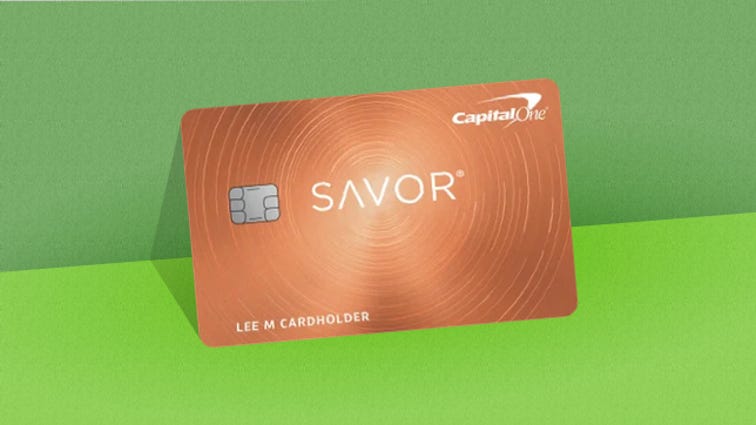
Annual fee: $95
Reward rates: Unlimited 4% cash back on dining, entertainment and popular streaming services, 3% at grocery stores, 1% on all other purchases
Welcome bonus: $300
Bonus redemption threshold: Spend $3,000 in the first three months
Credit requirement: Good to Excellent
Intro APR: None
APR for purchases: 15.99% to 24.99% variable
APR for balance transfers: 15.99% to 24.99% variable
Balance transfer fee: None (“3% of the amount of each transferred balance that posts to your account at a promotional APR that we may offer you.”)
Now that restaurants have reopened and travel is back, a cash rewards card with restaurant perks might come in handy. We think the Capital One Savor Cash Rewards card is one of the best rewards credit card options available, with a $300 welcome bonus (after spending $3,000 in the first three months) that effectively cancels out the annual fee for the first three years.
The Savor card’s headline rate is the 4% you get on dining and entertainment, which includes bars and restaurants for dining and “tickets to a movie, play, concert, sporting event, tourist attraction, theme park, aquarium, zoo, dance club, pool hall or bowling alley” for entertainment. If you’re like most American consumers who spend more on dining than entertainment, then note the emphasis on that part of the bonus.
But keep in mind that the $3,000 bonus threshold is fairly high, so you might need to use the card for non-bonus category spending in those initial three months to make sure you hit it. You’ll be sacrificing a few percentage points of rewards from other cards, but it’s worth it to make sure you don’t forgo $300 — just do the math to ensure it makes sense.
This rewards credit card makes sense if you’re spending more than $300 per month on dining and entertainment. If that’s the case, I recommend only putting those purchases on it. There’s no reason to take the 1% penalty on non-dining and entertainment purchases. For those, use your 1.5% or 2% card.
You can redeem your Capital One Savor rewards in the form of a statement credit or as a check, at any amount (no minimum thresholds or maximum earning caps).
Another worth considering
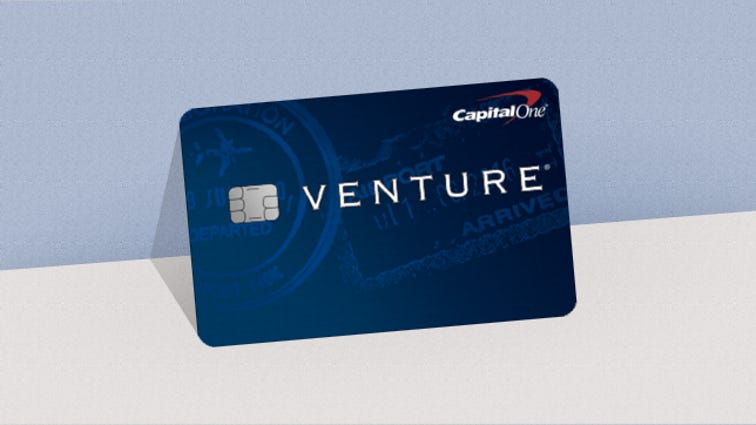
CapitalOne
Annual fee: $95
Reward rates: Unlimited 2x miles (2 miles per dollar) on every purchase
Welcome bonus: 60,000 miles
Welcome bonus value: $600 to $1,020*
Bonus redemption threshold: Spend $3,000 on purchases within the first 3 months from account opening
Credit requirement: Good to Excellent
Intro APR: N/A
APR for purchases: 17.24% to 24.49% (variable)
APR for balance transfers: 17.24% to 24.49% (variable)
Balance transfer fee: None (“3% of the amount of each transferred balance that posts to your account at a promotional APR that we may offer you”)
For anyone planning a big trip this summer, the Capital One Venture Rewards credit card offers $600 to $1,020 (60,000 miles after spending $3,000 in the first three months of opening your account) in welcome travel bonuses. Not only does the Venture Rewards have a large welcome bonus, it also has a comparatively modest $95 annual fee.
*The value of Capital One miles depends on how you redeem them. If you redeem your miles through Capital One, either as a statement credit or for travel, they’re worth 1 cent each. If you transfer your miles to an affiliate travel partner, they can be worth up to 1.7 cents apiece, according to The Points Guy’s valuation, depending on the specific flight or hotel stay.
Best Amazon rewards
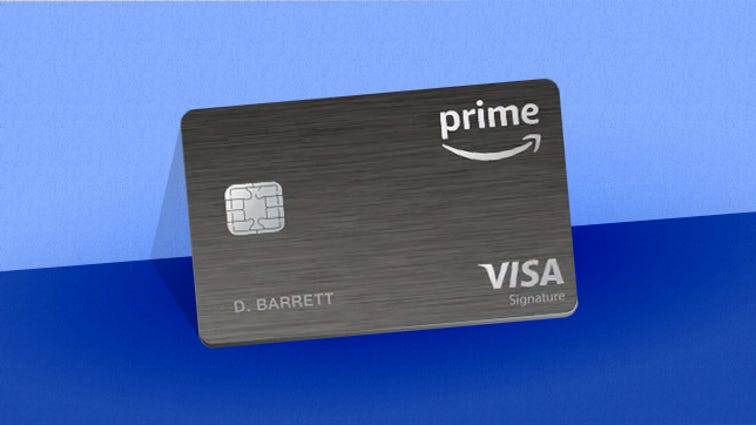
Annual fee: $0 (must be a Prime member to apply)
Reward rates: 5% cash back at Amazon and Whole Foods; 2% at restaurants, gas stations, drugstores; 1% on everything else; up to 10% cash back on rotating categories and Prime exclusives
Welcome bonus: Up to $150 Amazon Gift Card
Bonus redemption threshold: Card approval
Credit requirement: Fair
Intro APR: None
APR for purchases: 14.24% to 22.24% variable
APR for balance transfers: 14.24% to 22.24% variable
Balance transfer fee: 5% (minimum of $5)
The Amazon Prime Rewards Visa Signature Card earns you 5% cash back on purchases at Amazon and Whole Foods, which is pretty sweet if you’re a regular shopper at those stores. This card also offers a few other compelling benefits. First, new members can earn up to a $150 gift card upon approval, plus you can score up to 10% back in bonus rewards on select rotating Amazon products.
The card also throws in 2% at restaurants, gas stations and drug stores, plus 1% on all other everyday purchases. While Amazon offers a basic, non-Prime member card with 3% back on Amazon purchases, I’m focusing on the Prime rewards card since I assume that if you’re making a significant amount of purchases each month (over $250) at Amazon or Whole Foods, you’re most likely a Prime member.
If you shop a ton at Amazon and Whole Foods and most of the rest of your spending is at restaurants and on gas, the Amazon Prime Rewards card could be your only cash back card. Outside of that specific spending profile, though, I recommend using this rewards credit card like the others — as a supplement to a flat-rate card to earn cash for Amazon and Whole Foods purchases.
You can redeem points at checkout while shopping on Amazon for any amount, or redeem them as a statement credit through Chase starting at 2,000 points ($20). Note that Amazon encourages the Amazon redemption option (obviously) and doesn’t mention cash, but it is in fact a no-fee option that can be redeemed at the same rate.
Best Apple rewards

Annual fee: $0
Reward rates: 3% on Apple, Uber and Walgreens purchases; 2% on Apple Pay purchases; 1% on everything else
Welcome bonus: $0
Bonus redemption threshold: None
Credit requirement: Fair
Intro APR: N/A
APR for purchases: 10.99% to 21.99% variable
APR for balance transfers: Not offered
Balance transfer fee: Not offered
To be honest, the Apple Card offers very few benefits outside of Apple purchases, but if you’re in the market for a new MacBook for a college student or upgraded iPhone, this rewards credit card does boast some impressive Apple perks.
The Apple Card has a unique rewards program structure, offering 3% on Apple, Uber and Walgreens purchases (an eclectic combination of categories to say the least), 2% on purchases made with Apple Pay and 1% on everything else. Unless you’re an Apple super shopper and everyday Uber user, the 3% category isn’t going to stand out much. Plus, having to use Apple Pay to hit 2% compares poorly with the Citi Double Cash Card, which offers up to 2% on everything (1% when you buy, plus 1% when you pay for those eligible purchases), no matter how you pay. There are some advantages to Apple’s card, though.
The Apple Card’s privacy policy states that it will “never share or sell your data to third parties for marketing or advertising,” a significant gesture for those concerned with their personal data. The Apple Card’s reward structure is also distinct in that the cash back appears immediately in your account, hitting your balance at the end of each day. So if you can’t wait a month or two to redeem points and another four to five days for a statement credit to post to your account, the Apple Card’s instant rewards could be appealing.
If the primary 3% category (Apple, Uber and Walgreens) applies to a lot of your purchases, this is a good cash-back option. But, the 2% for Apple Pay is a little flimsy given not all retailers accept Apple Pay, while the Citi Double Cash Card offers up to 2% no matter what. This card is primarily for those who are interested in the card’s privacy policy and instant credit card rewards.
It’s worth pointing out that Apple has made a big deal out of the low APR and lack of fees for things like late payments, but assuming you’re paying off your balance on time every month anyway, this becomes less important. Note that the Apple Card doesn’t report credit activity to all three major credit bureaus (only TransUnion), so if you’re trying to build your credit score, it will have less of an impact.
More credit card recommendations
The editorial content on this page is based solely on objective, independent assessments by our writers and is not influenced by advertising or partnerships. It has not been provided or commissioned by any third party. However, we may receive compensation when you click on links to products or services offered by our partners.
